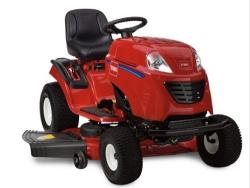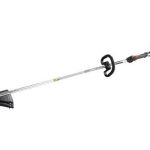In this day and age, buyers have more options than ever before when shopping for a riding lawn mower transmission. While it is true that there are technically several different varieties on the market, three categories are most common: manual, automatic, and hydrostatic. The exact type that you choose depends on the layout of your lawn, the frequency with which you mow, and your proficiency behind the wheel of the riding lawn mower. Below, we discuss the characteristics associated with each variety, allowing you to make a well-reasoned decision for which transmission is best for you.
Manual Transmission
Manual transmission is the most basic of the transmission categories. With a manual riding mower, you will need to conduct all of your gear shifting yourself. As a result, manual riding mowers are problematic for those who need to conduct substantial amounts of turning. If your lawn layout is filled with sharp turns (if you have trees, for example) or a steep gradient, you may find it necessary to look at an automatic or hydrostatic transmission. Despite its limitations, there are many lawn owners for whom it makes great sense to go with a manual mower. Not only are they cheaper by a significant margin (generally hundreds of dollars), but they work just fine for anyone with a wide lawn layout that requires little gear shifting.
Automatic Transmission
With automatic transmission, the driver is not tasked with shifting gears. This makes automatic riding mowers much easier for those with relatively little mowing experience. An advantage of automatic and hydrostatic mowers is that many of them come with optional cruise control, allowing the driving to travel in one speed for long stretches. Because automatic riding mowers require no gear shifting, they are much easier for switching speeds, and the added convenience makes it so that automatic mowers generally save quite a bit of time compared to manual mowers.
Hydrostatic Transmission
The most high-powered transmission is hydrostatic. With a hydrostatic mower, the driver does not need to use the pedal to shift, and there is also no belt. Instead, fluids are responsible for shifting power from the engine to the wheels, making for an exceptionally smooth ride and lengthier transmission duration. The added durability comes at a cost, though, as hydrostatic mowers are the most expensive. They are also less efficient and require more fuel and maintenance, so buyers will have to weigh the superior performance against the high cost required to purchase and maintain hydrostatic mowers.
While manual, automatic, and hydrostatic transmissions are most common, buyers should also look into electric mowers, which are more environmentally friendly and still offer strong performance. Whichever transmission variety you choose, pay close attention to the information discussed in this post, as the transmission you choose has a major impact on the mowing process.






